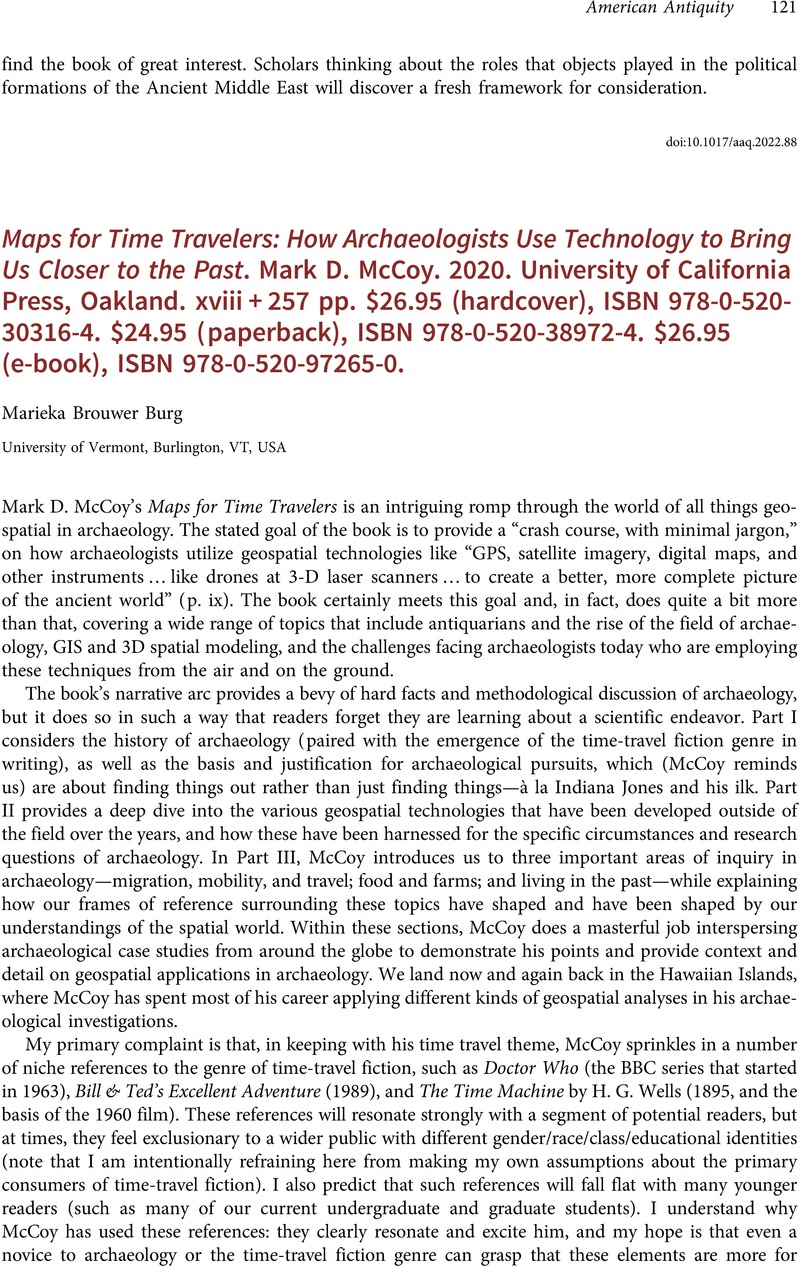No CrossRef data available.
Article contents
Maps for Time Travelers: How Archaeologists Use Technology to Bring Us Closer to the Past. Mark D. McCoy. 2020. University of California Press, Oakland. xviii + 257 pp. $26.95 (hardcover), ISBN 978-0-520-30316-4. $24.95 (paperback), ISBN 978-0-520-38972-4. $26.95 (e-book), ISBN 978-0-520-97265-0.
Review products
Maps for Time Travelers: How Archaeologists Use Technology to Bring Us Closer to the Past. Mark D. McCoy. 2020. University of California Press, Oakland. xviii + 257 pp. $26.95 (hardcover), ISBN 978-0-520-30316-4. $24.95 (paperback), ISBN 978-0-520-38972-4. $26.95 (e-book), ISBN 978-0-520-97265-0.
Published online by Cambridge University Press: 09 December 2022
Abstract
An abstract is not available for this content so a preview has been provided. Please use the Get access link above for information on how to access this content.

- Type
- Review
- Information
- Copyright
- Copyright © The Author(s), 2022. Published by Cambridge University Press on behalf of the Society for American Archaeology


